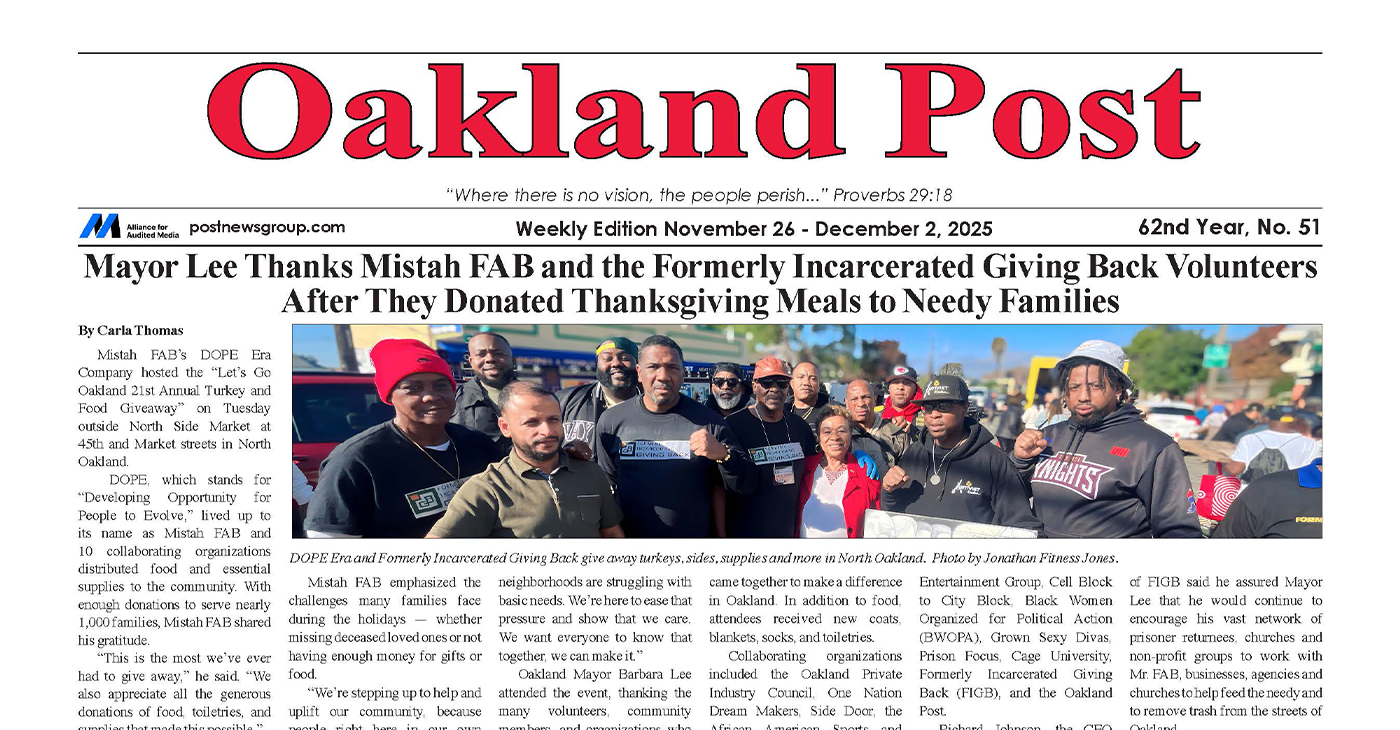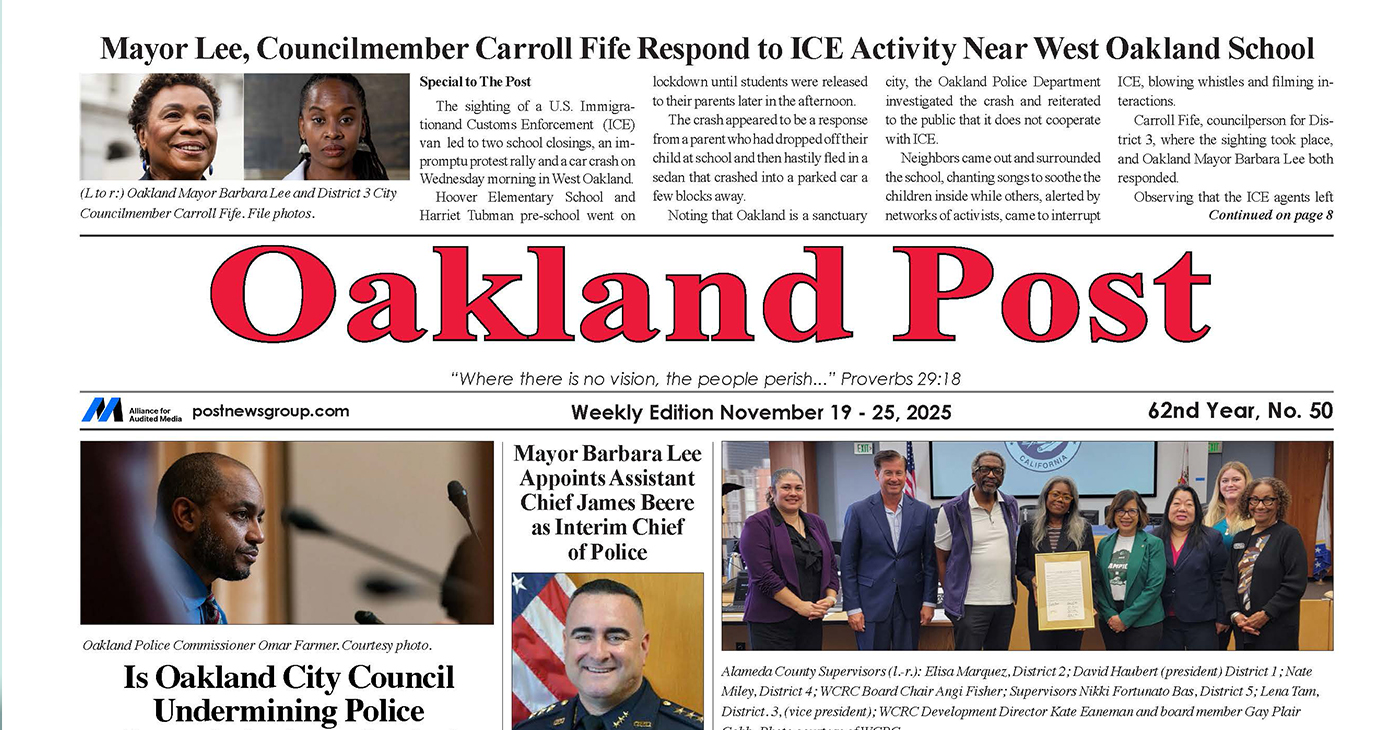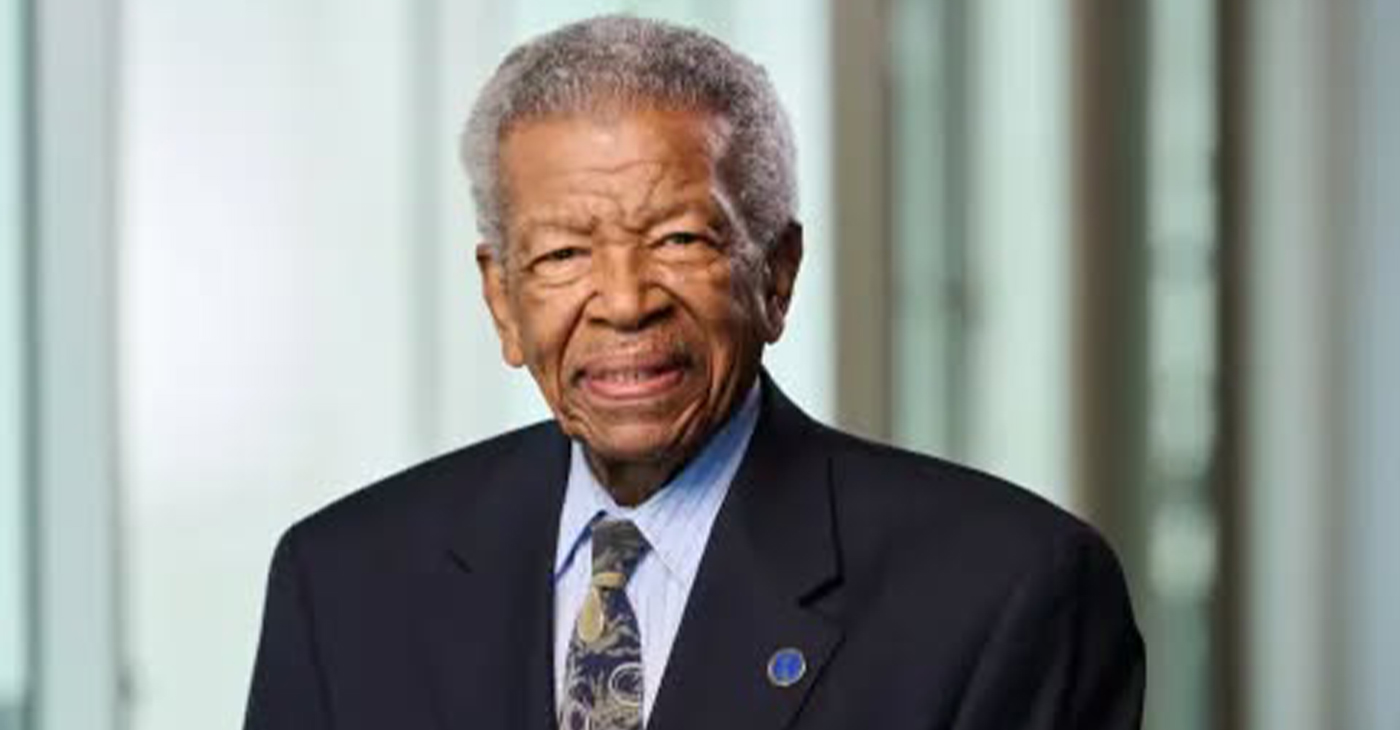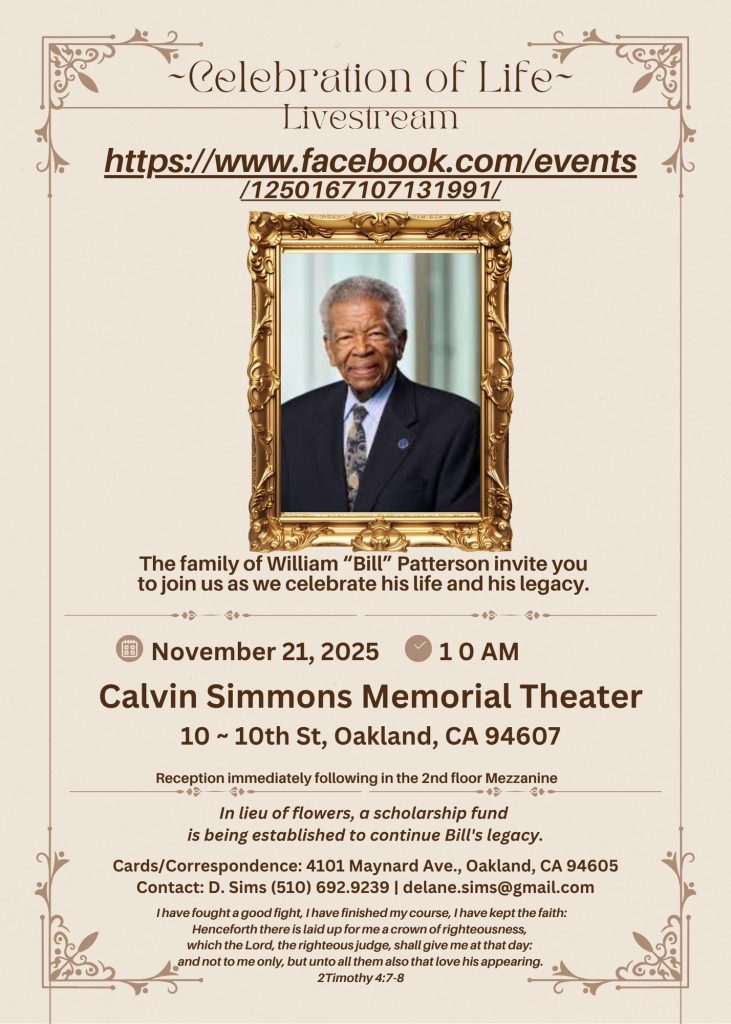Activism
San Jose Spotlight: 15 of the Most Influential Black Leaders in Silicon Valley
Local Black leaders are working to change the odds and boost equality for the community. In celebration of Black History Month, San Jose Spotlight is highlighting 15 of the most influential Black leaders in Silicon Valley.

By Loan-Anh Pham, San Jose Spotlight
Black residents make up about 3% of Santa Clara County’s population, but the impact of Black leaders on the region is undeniable — even while facing adversity.
The Black community in Silicon Valley and across the nation face systemic disparities: The population is overrepresented among the homeless and historical housing segregation has resulted in lower rates of Black homeownership.
Data from the 2022 Silicon Valley Pain Index shows the COVID-19 pandemic disproportionately affected Black residents in terms of income and poverty levels, and Black students face higher levels of suspensions compared to white counterparts.
These trends have resulted in what leaders call a “Black exodus” as residents flee pricey Silicon Valley or face displacement.
But there’s hope. Local Black leaders are working to change the odds and boost equality for the community. In celebration of Black History Month, San Jose Spotlight is highlighting 15 of the most influential Black leaders in Silicon Valley.
While this isn’t an exhaustive list of all the tremendous Black leaders in our region, these individuals have broken barriers, shattered stereotypes and inspired change in Silicon Valley.
Here they are in alphabetical order by first name.
Ahmad Thomas
Ahmad Thomas broke barriers in August 2020 when he became the first Black man to lead the Silicon Valley Leadership Group, a powerful trade association of prominent businesses and tech giants.
Right off the bat, Thomas got to work on improving Silicon Valley’s economic vitality, while also prioritizing diversity and equity in business. He advocated for more racial equity in Silicon Valley by helping member companies hire more minority candidates and funding more Black- and Latinx-owned startups.
Prior to joining SVLG, Thomas worked as an investment banker for Barclays. Thomas also worked as a senior aide to U.S. Sen. Dianne Feinstein.
Alma Burrell
Eliminating health disparities in underserved communities has been Alma Burrell’s calling. After managing health programs for children for 20 years, Burrell joined Roots Community Health Center as its chief administrative officer. The nonprofit health organization is committed to serving marginalized and underserved communities in San Jose.
She is a leading expert on the need for African-centered medical care and spent 18 years working with the Black Infant Health program in Santa Clara County, which is aimed at improving the wellbeing of pregnant women and their babies.
Black mothers in the U.S. are about three times more likely than white mothers to die from childbirth-related causes, according to the CDC. “I love my people and I want to see healthy babies,” she told LAist.
Andre Chapman
While working in tech in the 1990s, Andre Chapman was disheartened by the lack of minorities in the field. He personally witnessed the unsettling tale of two Silicon Valleys — the haves and have nots. He left his lucrative tech job — a move questioned by some — and decided to do something about it.
Chapman founded The Unity Care Group in 1993 to develop educational and social programs to enrich the lives of disadvantaged underserved youth. Now he works to improve the foster youth system through mental health and criminal justice reform and has helped thousands of families.
Chapman is a national expert on creating culturally proficient services and a recipient of San Jose State University’s Evelyn T. Robinson Outstanding African American Alumnus award.
Forrest Williams
During his 16 years in public office, Forrest Williams prioritized equitable education and access to public services, working to build multiple community centers and libraries. He said education is a priority for Black residents and future generations.
Williams a former San Jose councilmember and Oak Grove School District Board member who spent 35 years as an IBM engineer.
The county’s Black students face higher levels of suspensions, lower test scores and less mental health support. Williams said increasing equity in education requires community involvement from parents, students and leaders.
“You’ve got to take an active role in the educational system… that will make a significant difference,” Williams told San Jose Spotlight. “Kids (are) the objects of the future.”
Iola Williams
The late Iola Williams made history as San Jose’s first Black councilmember in 1979 and went on to serve for 12 years, including two terms as vice mayor. She was a pivotal leader and advocate for civil and LGBTQ rights.
Williams was a major supporter of the shift to district elections in San Jose — which allowed for the election of more diverse policymakers — and an advocate for neighborhoods.
Williams received the African American Community Service Agency’s Lifetime Achievement Award, which was renamed after her, in 2016. She died at age 83 in 2019 after losing a battle with Parkinson’s disease.
Rev. Jeff Moore II
Rev. Jeff Moore II said visibility and meaningful representation for the region’s Black community is the first step.
Moore is former president of the San Jose/Silicon Valley NAACP and is a longtime community activist whose work revolves around education, homelessness and oversight on police departments. A tireless champion for civil rights, Moore said Black representation is vital — from corporate leadership to classrooms.
“Our diversity is so rich and so great, but yet, the Black voice, there’s nobody advocating for it,” Moore told San Jose Spotlight. “That’s one of the biggest things: who is that champion that we can go to?”
LaDoris Cordell
LaDoris Cordell made history as Northern California’s first Black female judge and served in Santa Clara County for 20 years, from 1982-2001.
In addition to devoting her legal career to creating justice for minorities and low-income people, Cordell is an author, artist, vocalist and pianist. She is also a member of the LGBTQ community and a mother to two daughters.
In, 2021, Cordell published “Her Honor,” a book that explored the broken criminal justice system and how to fix it. She also served as a Palo Alto councilmember and San Jose independent police auditor.
“The number of African Americans who reside in Santa Clara County and throughout Silicon Valley continues to drop… My concern is that the contributions of this area’s Black residents will fade from the public memory,” Cordell told San Jose Spotlight. “Even though our population is small, racial profiling of African Americans continues unabated.”
Milan Balinton
Milan Balinton, the executive director of the African American Community Service Agency, confronted more than one barrier growing up. Facing a learning disorder and growing up in poverty, Balinton decided to dedicate himself to public service and education — fighting for those who are voiceless.
He learned advocacy from a young age when his grandmother introduced him to the NAACP and urged him to “give back to the community, for many have sacrificed so that we could be free, and you must do the same.” Those words still guide him today.
Balinton is also a trustee on the Franklin-McKinley School Board and is involved with the Black Leadership Kitchen Cabinet. He was the 2016 winner of Ebony Magazine’s Power 100 People’s Choice Award.
Nicole Taylor
Nicole Taylor is the CEO of Silicon Valley Community Foundation, the largest charitable foundation in the United States.
Taylor joined the foundation at a critical moment: It had just lost its former CEO amid a scandal that involved misconduct by top leadership. Taylor jumped in headfirst to restore trust and rebuild values at the power philanthropic organization. She met with nonprofit partners to learn more how the foundation can open doors for marginalized communities.
Taylor herself is no stranger to hardship. She’s the daughter of an immigrant mother who came to the U.S. without an education and went on to become an educator in Oakland’s public school system. Her previous roles include serving as Stanford University’s dean of community engagement and diversity and CEO of the East Bay Community Foundation.
Phaedra Ellis-Lamkins
Phaedra Ellis-Lamkins is a social justice advocate, businesswoman and community organizer. She started her career as a union organizer in San Jose and became the executive officer of the South Bay AFL-CIO Labor Council in 2003 at the age of 26, which boasts 110 unions and more than 100,000 members.
She left the post in 2009 to lead D.C.-based Green For All, an anti-poverty organization founded by national news personality Van Jones. Currently, she serves as co-founder and CEO of Promise, a company reworking the bail system.
San Jose Magazine named Ellis-Lamkins one of the 100 most powerful people in Silicon Valley. She was recognized as a Young Global Leader by the World Economic Forum and one of the 25 most Powerful Americans by Ebony Magazine.
Regina Celestin Williams
Regina Williams grew up in low-income housing in Richmond. She knows firsthand the importance of affordable, stable and safe housing for all — and now she’s working to ensure others have it. In 2021, Williams became the executive director of Silicon Valley at Home, a nonprofit that advocates for policies to increase the supply of affordable housing.
Williams was inspired by a “transformative” affordable housing class at Stanford, prompting her to pivot from engineering and making it her life’s goal to advance the housing movement. She previously served as the director of housing development for First Community Housing. In 2019, Williams was named one of the area’s 40 Under 40 by the Silicon Valley Business Journal.
Her husband, Jahmal, is also a respected community leader. He is the co-chair of the Black Leadership Kitchen Cabinet and San Jose State University’s director of advocacy for racial justice.
Rick Callender
Three years ago, Rick Callender broke barriers by becoming the first Black man to lead the Santa Clara Valley Water District — the area’s largest water supplier. It was a dream for a man who worked his way up the ranks at the organization since 1996.
Callender, an attorney and longtime community leader, serves as president of the California-Hawaii chapter of the NAACP. In that role, he helps oversee 74 branches and youth units of the association to help ensure racial justice and equality.
“When fighting for justice, it’s important to remember that it’s both a marathon and a sprint at the same time,” he told California Black Media.
Ricks mother, Norma Callender was, also a civil rights leader in the San Jose community.
Rosalyn Hughey
Rosalynn Hughey broke barriers both in a development industry dominated by men — as well as racial barriers by becoming the first Black city department head in San Jose in 2021. Today, she serves as a deputy city manager in America’s 10th largest city.
Hughey, who previously ran the city’s massive planning department, grew up watching her dad — a contractor — build homes from the ground up. While juggling one of the hardest jobs at San Jose City Hall, Hughey worked to address citywide injustices and focus on improving neighborhoods. She’s spent more than three decades as an urban planner in a field often dominated by white men. Hughey is also credited with kickstarting conversations about race and equity within the city.
Tony Alexander
Tony Alexander is no stranger to San Jose politics. He served as a leader in San Jose’s labor movement spanning decades with the United Food and Commercial Workers Union, leading its minority coalition. An East San Jose product, he served on the Alum Rock Union School Board and was appointed and reelected to the San Jose Evergreen Community College Board last year. He also started his own political consulting venture, JW Consulting in 2015.
Alexander is the president of the Silicon Valley African American Democratic Coalition and past president of the San Jose/Silicon Valley NAACP.
His wife, Linda Stuckey-Alexander, has also been a force in local politics and leads Democratic Activists of Women Now (DAWN) and his parents, Charles “Chuck” and Saphrona Alexander, were longtime community activists in San Jose.
Walter Wilson
Walter Wilson, a partner of the Silicon Valley Minority Business Consortium, has for years fought for equal treatment of Black and minority-owned businesses.
He believes stopping displacement of Black residents in San Jose requires creating economic resources for small businesses and communities. Wilson is a project manager for the Silicon Valley African American Cultural Center Project, which provides health services, retail options, housing and cultural representation to the county’s Black community.
“Without economic opportunity and economic growth, you can’t build your household,” Wilson told San Jose Spotlight. “You can’t build your community and you definitely won’t have the opportunities for your kids to do better.”
Copyright © 2023 Bay City News, Inc.
Activism
Oakland Post: Week of November 26 – December 2, 2025
The printed Weekly Edition of the Oakland Post: Week of November 26 – December 2, 2025

To enlarge your view of this issue, use the slider, magnifying glass icon or full page icon in the lower right corner of the browser window.
Activism
Oakland Post: Week of November 19 – 25, 2025
The printed Weekly Edition of the Oakland Post: Week of November 19 – 25, 2025

To enlarge your view of this issue, use the slider, magnifying glass icon or full page icon in the lower right corner of the browser window.
Activism
IN MEMORIAM: William ‘Bill’ Patterson, 94
Bill devoted his life to public service and education. In 1971, he became the founding director for the Peralta Community College Foundation, he also became an administrator for Oakland Parks and Recreation overseeing 23 recreation centers, the Oakland Zoo, Children’s Fairyland, Lake Merritt, and the Henry J. Kaiser Convention Center.

William “Bill” Patterson, 94, of Little Rock, Arkansas, passed away peacefully on October 21, 2025, at his home in Oakland, CA. He was born on May 19, 1931, to Marie Childress Patterson and William Benjamin Patterson in Little Rock, Arkansas. He graduated from Dunbar High School and traveled to Oakland, California, in 1948. William Patterson graduated from San Francisco State University, earning both graduate and undergraduate degrees. He married Euradell “Dell” Patterson in 1961. Bill lovingly took care of his wife, Dell, until she died in 2020.
Bill devoted his life to public service and education. In 1971, he became the founding director for the Peralta Community College Foundation, he also became an administrator for Oakland Parks and Recreation overseeing 23 recreation centers, the Oakland Zoo, Children’s Fairyland, Lake Merritt, and the Henry J. Kaiser Convention Center.
He served on the boards of Oakland’s Urban Strategies Council, the Oakland Public Ethics Commission, and the Oakland Workforce Development Board.
He was a three-term president of the Oakland branch of the NAACP.
Bill was initiated in the Gamma Alpha chapter of Kappa Alpha Psi Fraternity.
In 1997 Bill was appointed to the East Bay Utility District Board of Directors. William Patterson was the first African American Board President and served the board for 27 years.
Bill’s impact reached far beyond his various important and impactful positions.
Bill mentored politicians, athletes and young people. Among those he mentored and advised are legends Joe Morgan, Bill Russell, Frank Robinson, Curt Flood, and Lionel Wilson to name a few.
He is survived by his son, William David Patterson, and one sister, Sarah Ann Strickland, and a host of other family members and friends.
A celebration of life service will take place at Henry J. Kaiser Convention Center (Calvin Simmons Theater) on November 21, 2025, at 10 AM.
His services are being livestreamed at: https://www.facebook.com/events/1250167107131991/
In lieu of flowers, donations can be made to the Euradell and William Patterson scholarship fund TBA.

-

 Activism3 weeks ago
Activism3 weeks agoOakland Post: Week of November 12 – 18, 2025
-

 Activism4 weeks ago
Activism4 weeks agoOakland Post: Week of November 5 – 11, 2025
-

 Activism2 weeks ago
Activism2 weeks agoIN MEMORIAM: William ‘Bill’ Patterson, 94
-

 Activism3 weeks ago
Activism3 weeks agoHow Charles R. Drew University Navigated More Than $20 Million in Fed Cuts – Still Prioritizing Students and Community Health
-

 #NNPA BlackPress3 weeks ago
#NNPA BlackPress3 weeks agoThe Perfumed Hand of Hypocrisy: Trump Hosted Former Terror Suspect While America Condemns a Muslim Mayor
-

 #NNPA BlackPress3 weeks ago
#NNPA BlackPress3 weeks agoProtecting Pedophiles: The GOP’s Warped Crusade Against Its Own Lies
-

 Bay Area3 weeks ago
Bay Area3 weeks agoNo Justice in the Justice System
-

 #NNPA BlackPress4 weeks ago
#NNPA BlackPress4 weeks ago2026 Subaru Forester Wilderness Review: Everyday SUV With Extra Confidence
























































